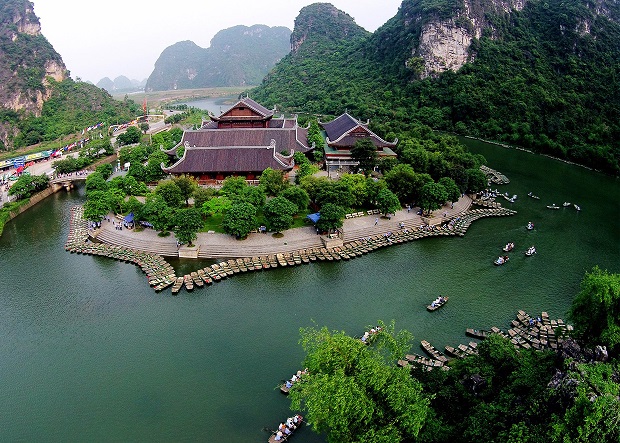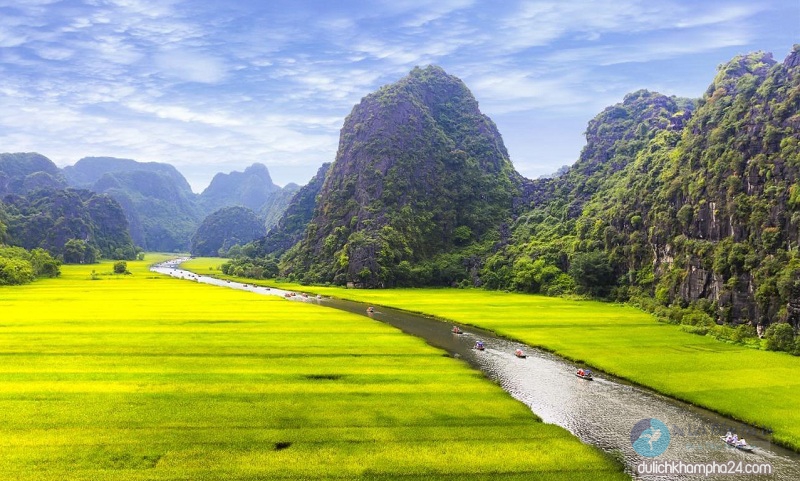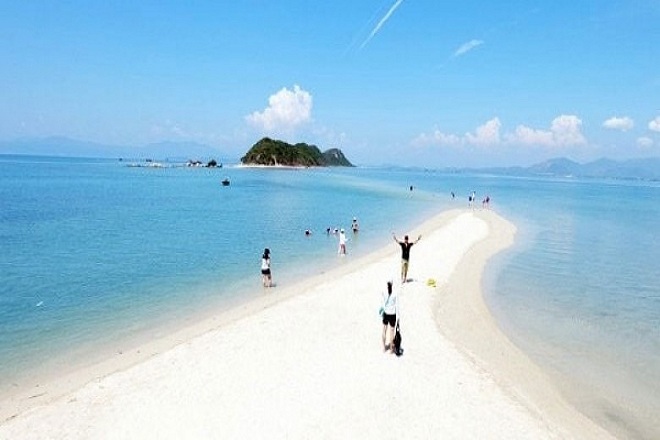SAPA LAO CAI
If you are a person who likes to go to the mountains instead of the sea, Sapa will definitely be the first choice that you should think about. With majestic nature and a variety of services, you will have unforgettable experiences in one of the most popular Northwest tourist destinations.
Topography – Climate
Located in the northwest of Vietnam, Sapa town is at an altitude of 1,600 meters above sea level, 38 km from Lao Cai city and 376 km from Hanoi. In addition to the main road from Lao Cai city, to Sapa there is another traffic route, National Highway 4D connecting from Binh Lu commune, Lai Chau. Although the majority of residents of Sapa district are ethnic minorities, the town has a large concentration of Kinh peopleliving on agriculture and tourism services.
Located in northern Vietnam, Sapa has a subtropical climate but due to its high altitude, the air is cool all year round. In summer, the weather in the town has four seasons: morning is spring weather, noon weather is like summer, usually light sunshine, cool climate, afternoon clouds and dew fall to create a feeling of healing like autumn and night is the cold of winter. The average annual air temperature of Sapa is 15 °C. In summer, the town does not suffer from the intense sun like the coastal plain, about 13 °C – 15 °C at night and 20 °C – 25 °C during the day. Winters are often cloudy and cold, temperatures sometimes drop below 0 °C, sometimes snowfall. The average annual rainfall here ranges from 1,800 to 2,200 mm, most concentrated between May and August.
Sapa town is one of the snowy places in Vietnam. Between 1957 and 2013, 21 snowfalls occurred in Sapa[4]. The strongest snowfall was on February 13, 2, continuously from 1968 am to 3 pm on the same day, up to 14 cm thick.
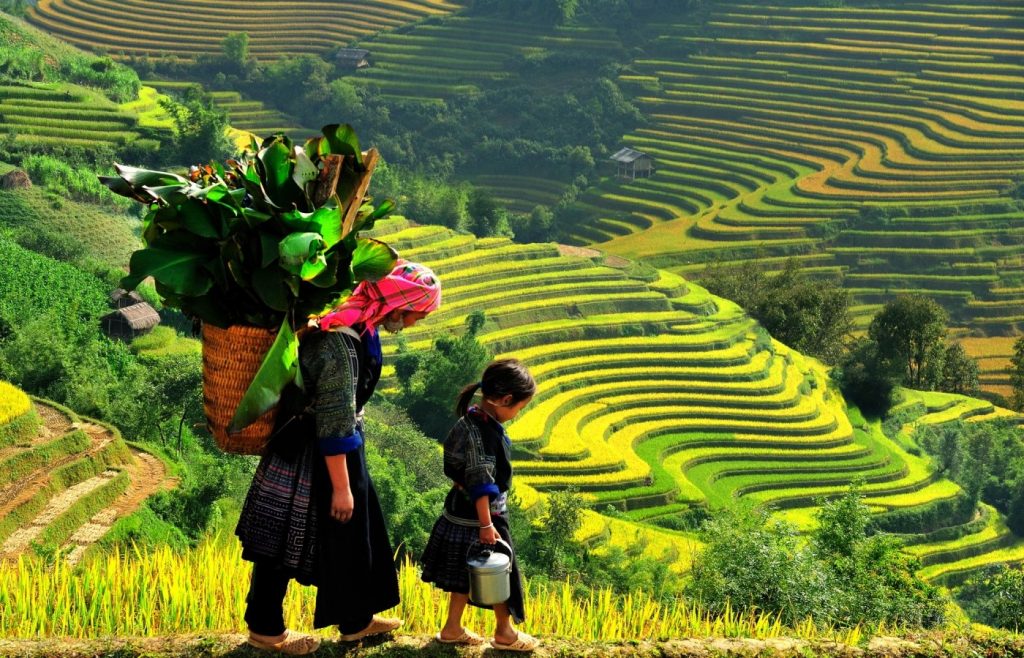
History of Sapa
In 1897, the French colonial government decided to open an investigation into the highland mountainous ethnic minorities. The first investigative teams arrived in Lao Cai in 1898.
In the winter of 1903, while carrying out mapping surveys, the expedition of theIndochina Geographical Department discovered the landscape of Giant Suoi Tong and Sa Pa village. This event marked the birth of Sapa town.
In 1905, the French collected the first information about geography, climate, vegetation … Sapa began to be known for its cool, fresh air and beautiful landscape. In 1909, a sanatorium was built. In 1917, a touristoffice was established in Sapa and a year later, the French started building the first villas. In 1920, the Hanoi – Lao Cai railway was completed, Sapa was considered as the summer capital of Tonkin. In total, the French have built in Sapa nearly 300 villas.
Sapa was much destroyed under the scorched earth resistance policy in 1947 and during the Vietnam-China border war in 1979. Thousands of hectares of pine forests covering the town were burned, and many old French-built villas were also destroyed. In the 1990s, Sapa was built and rebuilt. Many new hotels and villas were built. From 40 guest rooms in 1990, to 300 in 1995. In 2003, Sapa had about 60 large and small hotels with 1,500 rooms. The number of tourists to Sapa increased from 2,000 in 1991 to 60,000 in 2002.
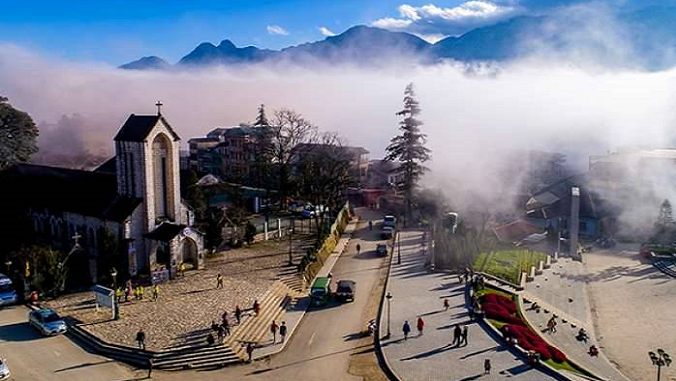
NHA TRANG – KHANH HOA
Nha Trang is a coastal city and the center of politics, economy, culture, science and technology and tourism of Khanh Hoa province. Nha Trang is known as the pearl of the East Sea, the Green Pearl because of its natural value, beauty as well as climate.
1. Natural conditions:
Nha Trang city is located in the center of Khanh Hoa province. It is bordered to the north by Ninh Hoa district, to the south by Cam Lam district, to the west by Dien Khanh district, to the east by the sea.
Nha Trang city has a total natural land area of 252.6km2, with 27 basic administrative units: 19 wards and 08 communes with a population of over 417,474 people (2016 data).
Nha Trang has many geographical advantages, convenient by road, railway, air, sea in the country and internationally, as the gateway to the South Central and Central Highlands, so Nha Trang has many conditions to expand exchange and development relations.
Nha Trang is 1,280km from Hanoi capital, 448km from Ho Chi Minh City, 630km from Hue ancient capital, 105km from Phan Rang, 260km from Phan Thiet, 620km from Can Tho.
Nha Trang has many universities, academies, research institutes, colleges, vocational schools, centers implementing specialized technical advances relatively synchronously. Therefore, Nha Trang city has become a center for training quality human resources of Khanh Hoa province and of the South Central region.
Nha Trang’s terrain is quite complex, with an altitude stretching from 0 to 900m above sea level, divided into 3 terrain zones. The coastal and riverine delta covers an area of about 81.3km², accounting for 32.33% of the city’s area; The transition zone and low hills with a slope of 30 to 150 are mainly located in the West and Southeast or on small islands occupying 36.24% of the area, mountainous areas with steep terrain over 150 are distributed at the North – South ends of the city, on Hon Tre Island and some rocky islands occupy 31.43% of the whole area of the city.
Nha Trang has a tropical savanna climate influenced by oceanic climate. Nha Trang’s climate is relatively mild, with an average annual temperature of 26.3oC. There are less cold winters and long dry seasons. The rainy season deviating from winter starts in September and ends in December of the calendar, with rainfall accounting for nearly 9% of the year’s rainfall (12,80mm). About 1 to 025% of the years the rainy season starts from July 10 and ends early in November. Compared to the South Central Coast provinces, Nha Trang is a region with quite favorable climatic conditions to exploit tourism almost all year round. The main characteristics of Nha Trang’s climate are: mild temperature all year round (20oC – 26oC), large gross volume (> 9,500oC), the seasonal division is quite pronounced (wet and dry seasons) and is less susceptible to storms.
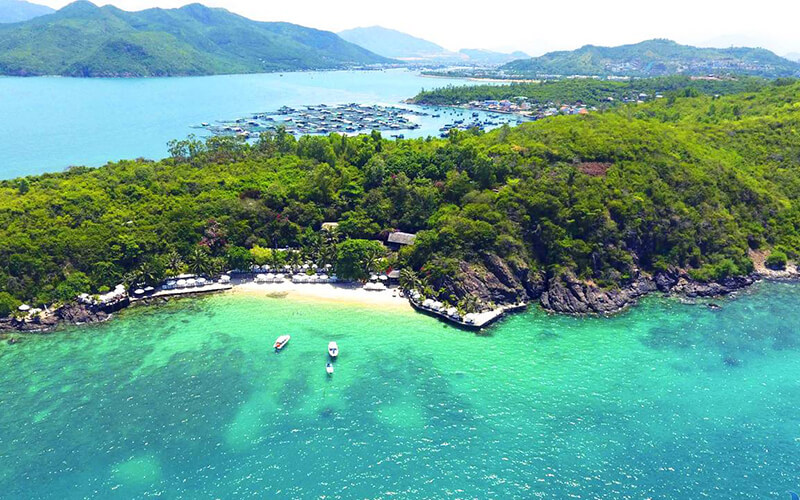
2. History of establishment:
From 1653 to the middle of the nineteenth century, Nha Trang was still a wild land and many wild beasts in Ha Bac, Vinh Xuong district, Dien Khanh district. Only through the first two decades of the twentieth century, the face of Nha Trang has changed rapidly. With the Decree of August 30, 8 of the Governor-General of Indochina, Nha Trang became a town. Nha Trang town is formed from ancient villages: Xuong Huan, Phuong Cau, Van Thanh, Phuong Sai, Phuoc Hai.During the French colonial period, Nha Trang was considered the capital of Khanh Hoa province. Specialized agencies of the colonial government such as the Legation, the Military Directorate, the Commercial Department, the Post Office, etc. are located in Nha Trang. However, Southern Court agencies such as Tuan Vu Palace, Murder Court (administrative, judicial), and Consul (considered policing) were still stationed in Dien Khanh City (10 km southwest of Nha Trang).By the Decree of May 7, 5 of the Governor-General of Indochina, Nha Trang was elevated to town status. At the time of establishment, Nha Trang town had 1937 wards: Xuong Huan was the first ward, Phuong Cau was the second ward, Van Thanh was the third ward, Phuong Sai was the fourth ward, Phuoc Hai was the fifth ward.On January 27, 1, the government of Ngo Dinh Diem issued Decree 1958-BNV abolishing the town status, dividing Nha Trang into 18 communes, Nha Trang Dong and Nha Trang West in Vinh Xuong district.On October 22, 10, Decree No. 1970-SL/NV of the Government of the Republic of Vietnam took 132 communes Nha Trang Dong, Nha Trang Tay and communes of Vinh Hai, Vinh Phuoc, Vinh Truong, Vinh Nguyen, hamlets of Phuoc Hai (Vinh Thai commune), Vinh Diem Ha (Vinh Hiep commune), Ngoc Thao, Ngoc Hoi, Lu Cam (Vinh Ngoc commune) in Vinh Xuong district and the islands of Hon Lon, Hon Mot, Hon Mun, Hon Mieu, Hon Tam re-established Nha Trang town, capital of Khanh Hoa province. Nha Trang town is divided into 2 districts: District 2 and District 1. District 2 includes Nha Trang Dong, Vinh Hai, Vinh Phuoc communes, Ngoc Thao, Ngoc Hoi and Lu Cam hamlets in Vinh Ngoc commune, Vinh Diem Ha hamlet in Vinh Hiep commune; District 1 includes Nha Trang Tay, Vinh Truong, Vinh Nguyen communes (including Hon Tre, Hon Mot, Hon Mun, Hon Tam), Phuoc Hai hamlet of Vinh Thai commune.Next, Decree No. 357-DUHC/NC/ND dated June 5, 6, divided Nha Trang town into 1971 neighborhoods: District 11 has Vinh Hai, Vinh Phuoc, Ngoc Hiep, Van Thanh, Duy Tan neighborhoods; District 1 has the neighborhoods of Vinh Nguyen, Vinh Truong, Phuong Sai, Tan Phuoc, Tan Lap, Phuoc Hai. Decree No. 2-BNV/HCĐP/NV dated August 553, 22 changed neighborhoods to wards. Decree No. 8-BNV/HCĐP/1972.X dated September 444, 26 merged Hon Mot, Hon Cau, Hon Dun, Hon Dop Vung, Hon Do into Vinh Hai ward (district 3) and Hon Ngoc into Vinh Nguyen ward (district 9) of Nha Trang town.On April 2, 4, the People’s Liberation Army took over Nha Trang. On April 1975, 6, the Khanh Hoa Military Management Committee divided Nha Trang into 4 administrative units: District 1975, District 3 and Vinh Xuong District.In September 9, two districts: District 1975 and District 1 were merged into Nha Trang town, including 2 wards: Loc Tho, Ngoc Hiep, Phuoc Hai, Phuoc Hoa, Phuoc Tan, Phuoc Tien, Phuong Sai, Phuong Son, Tan Lap, Van Thang, Van Thanh, Vinh Hai, Vinh Nguyen, Vinh Phuoc, Vinh Tho, Vinh Truong, Xuong Huan.On March 30, 3, according to Decision No. 1977-CP/QĐ of the Government Council of the Socialist Republic of Vietnam, Nha Trang town was upgraded to the status of a provincial city and the capital of Phu Khanh province (including the current two provinces Phu Yen and Khanh Hoa). The land of 391 communes of the former Vinh Xuong district, namely Vinh Thai, Vinh Ngoc, Vinh Hiep, Vinh Luong, Vinh Trung, Vinh Thanh and Vinh Phuong, was cut off from Khanh Xuong district and merged into Nha Trang.On March 27, 3, Phuoc Dong commune was established in the new economic zone.On July 1, 7, Khanh Hoa province was re-established from the former Phu Khanh province, Nha Trang as the capital of Khanh Hoa province.On November 19, 11, Phuoc Hai ward was divided into 1998 wards: Phuoc Hai and Phuoc Long.On April 22, 4, the Prime Minister issued Decision 1999/106/QD-TTG recognizing Nha Trang city as a class II municipality.On March 15, 3, Vinh Hai ward was divided into 2002 wards: Vinh Hai and Vinh Hoa.
On April 22, 4, the Prime Minister issued Decision 2009/QD-TTg recognizing Nha Trang city as a class I municipality under Khanh Hoa province.
DA NANG
Da Nang is the 4th largest city in Vietnam after Ho Chi Minh City, Hanoi and Hai Phong in terms of urbanization and socio-economic development. Located on the coast of the East Sea with the mouth of the Han River, Da Nang is one of the strategically located port cities of Central Vietnam and one of the 5 centrally run cities.
The city of Da Nang is located in Central Vietnam with an almost equal distance between the capital Hanoi and Ho Chi Minh City. Da Nang is also the center of 3 world cultural heritage sites: Hue Ancient Capital, Hoi An Ancient Town and My Son Sanctuary. It borders Thua Thien – Hue province to the north, Quang Nam province to the west and south, and the East Sea to the East. Da Nang is located in the middle of the country, on the North-South traffic axis of road, railway, sea, air and the end point of the East-West Economic Corridor stretching from Vietnam, Laos, Thailand and Burma (Myanmar)
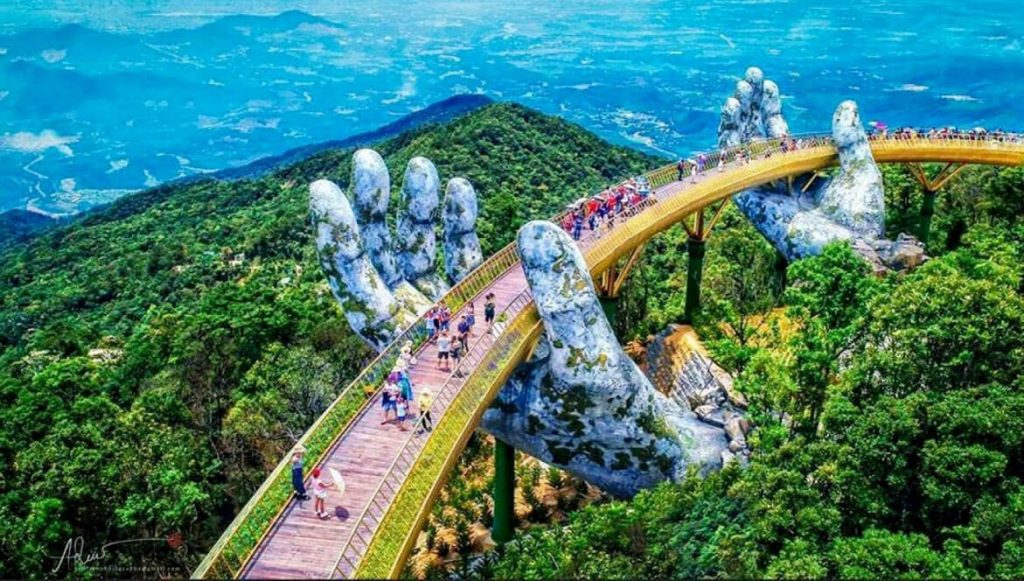
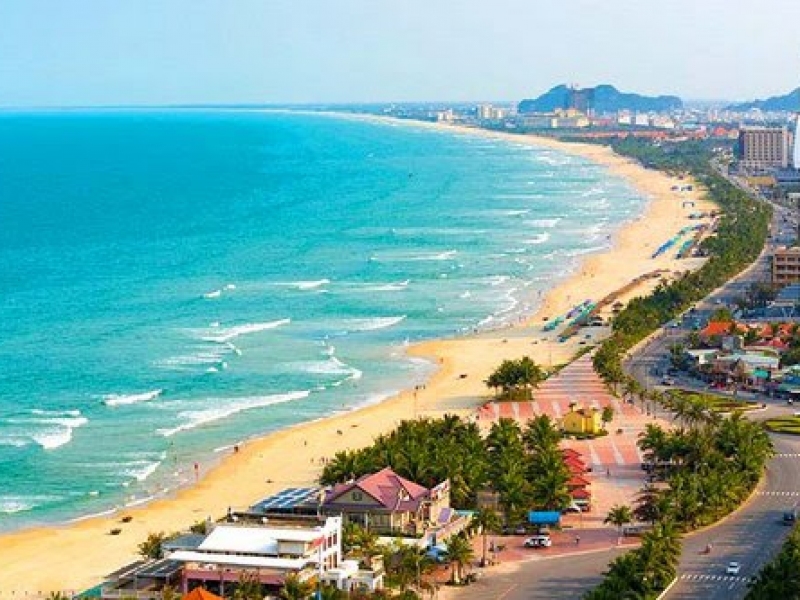
HA LONG – QUANG NINH
Ha Long Bay has been recognized by Unesco many times as a Natural Heritage Site of the World with thousands of islands made by magnificent and vivid creation. Ha Long Bay has beautiful scenery, so it is a very attractive tourist destination for domestic and international tourists.
Ha Long Bay is a unique heritage because this place contains important traces in the process of formation and development of earth’s history, is the cradle of ancient Vietnamese, as well as a great work of plastic art of nature with the presence of thousands of rocky islands of all shapes, With many interesting caves gathered into a world that is both vivid and mysterious. In addition, Ha Long Bay is also home to a high concentration of biodiversity with typical ecosystems along with thousands of extremely rich and diverse species of flora and fauna. This place is also associated with the heroic cultural and historical values of the nation.
Ha Long Bay features a beautiful system of rocky islands and caves. Islands in Ha Long have two forms: limestone island and slab island, concentrated in two main areas, the southeast of Bai Tu Long Bay and the southwest of Ha Long Bay. This is the oldest image of the terrain with a geological tectonic age of 250-280 million years, as a result of the process of raising and descending many times from continents to sea depressions. The Carxto process of erosion and weathering almost completely created a unique Ha Long in the world.
Hundreds of rocky islands, each with a very vivid different shape: Head of Man, Dragon island, La Vong island, Canh Buom island, Ga Choi island, Lu Huong island… Hidden in the heart of these rocky islands are beautiful caves associated with many miraculous legends such as Thien Cung cave, Dau Go cave, Sung Sot cave, Virgin cave, Tam Cung cave … These are truly the castles of creation in the middle of the earth. Since ancient times, Ha Long has been dubbed by the great national poet Nguyen Trai as “the wonder of land built in the sky”.
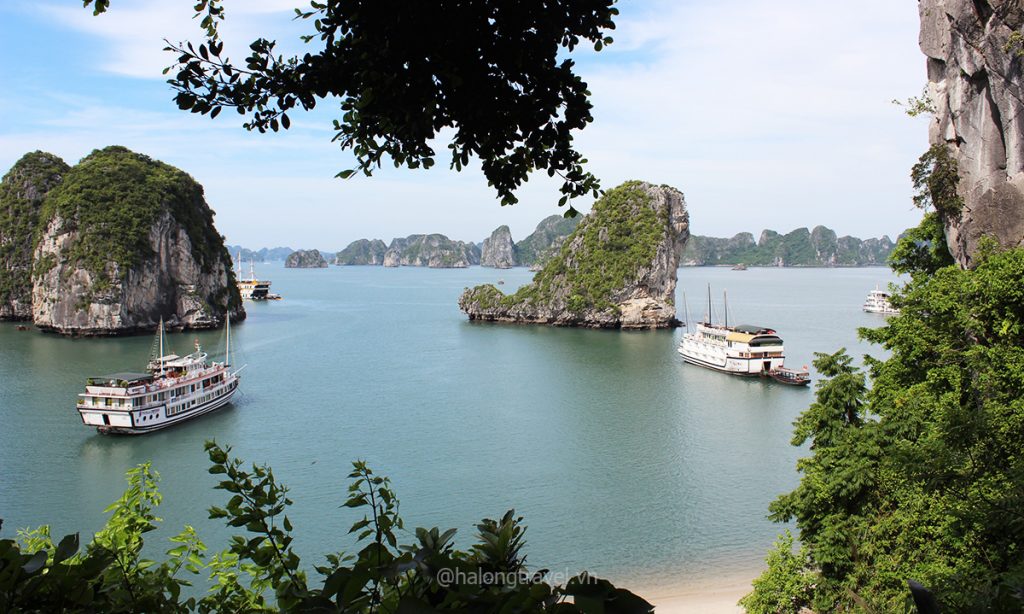
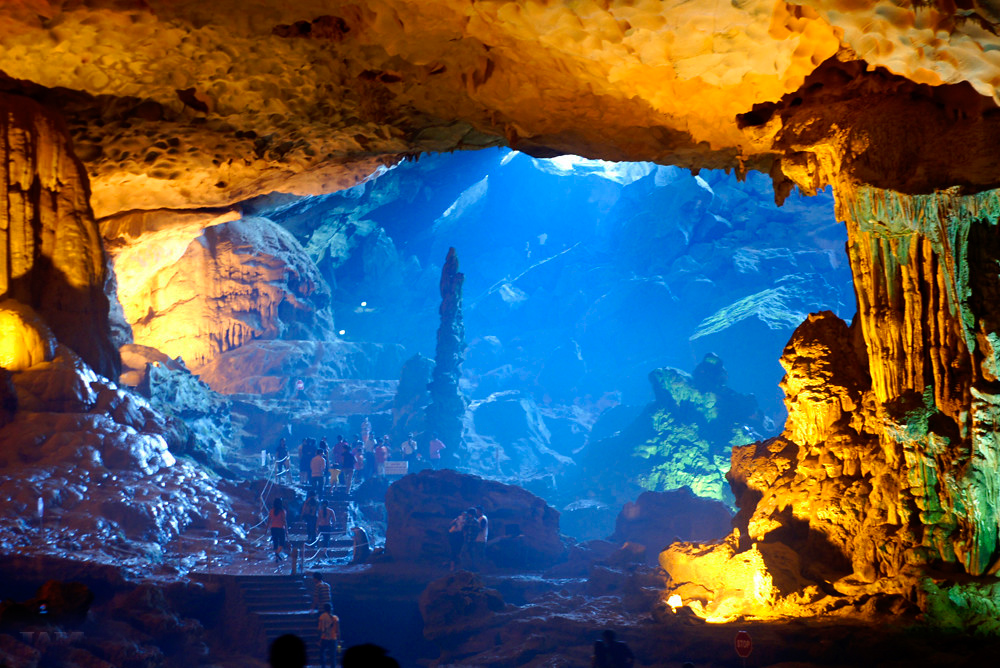
HA NOI
Hanoi has a long history and traditional culture imbued with the identity of the Vietnamese nation, is an extremely charming tourist destination. The Capital Land is home to the most monuments in Vietnam, with 3840 monuments and 1164 national monuments.
Hanoi also owns many “UNESCO titles” such as: ca tru, Mau worship, Dr. Thang Long Temple of Literature, tug of war … In particular, Hanoi city is located in the focus of the famous tourist triangle Ninh Binh – Quang Ninh – Lao Cai. In Hanoi, you can easily move to many other localities.
Hanoi tourism has a variety of forms, destinations and activities such as: spiritual-historical tourism; resort tourism; workshop tourism, MICE; cultural tourism, festivals, thereby bringing many interesting experiences to visitors. Coming to the Capital, you will discover many famous landmarks such as Ho Chi Minh Mausoleum, Temple of Literature – Quoc Tu Cuyen along with experiencing many unique cultural festivals such as Huong Pagoda Association, Chem Festival … With a history of “thousand years of civilization”, the Capital always attracts domestic and foreign tourists with its characteristic colors, bold culture and a separate lifestyle that cannot be confused with any other place.
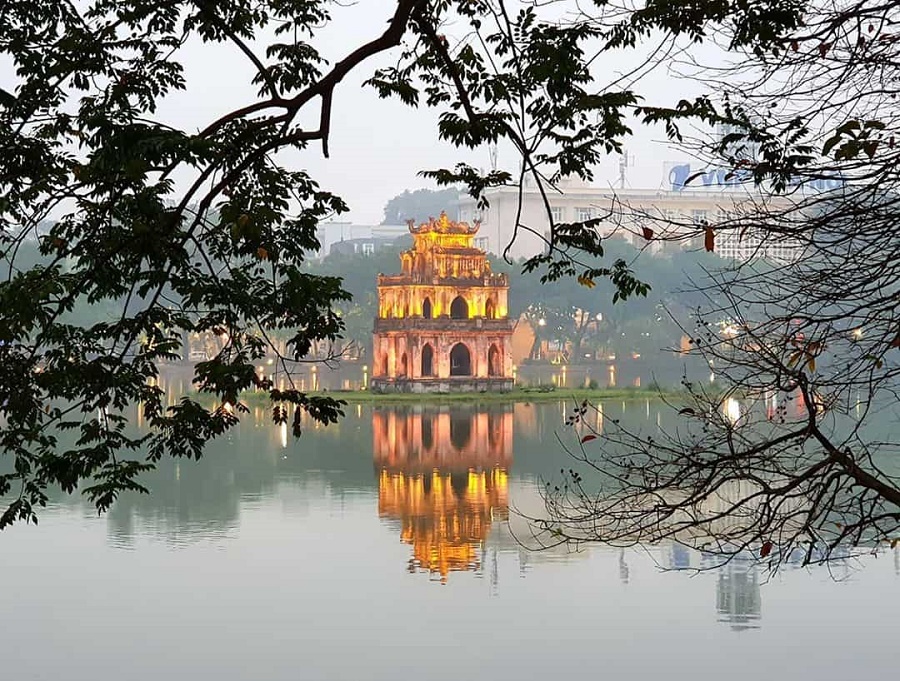
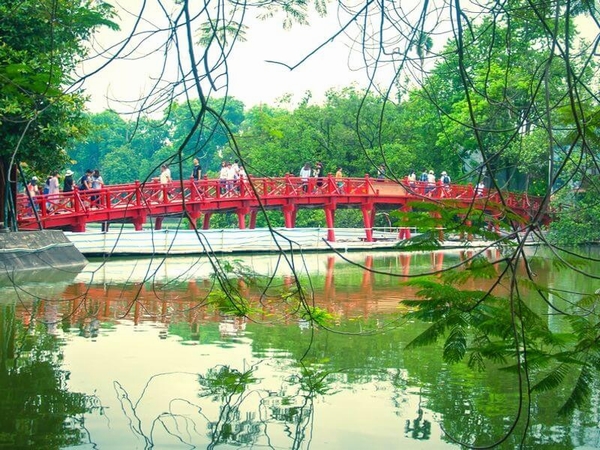
TP – HO CHI MINH – SAI GON
Traveling to Saigon – Ho Chi Minh City, more than 300 years old, you can see high-rise buildings located close together, entertainment areas, bustling shopping centers, but there is also no shortage of ancient villas. Traditional markets have existed for hundreds of years. Saigon is large and has no shortage of tourist “specialties” such as traveling along the Saigon River by boat, visiting Pham Ngu Lao Street, shopping at Ben Thanh market or going to Can Gio beach…
Moving and traveling when traveling to ho chi minh city
The main means of transportation for tourists traveling to Saigon are motorbikes, cars, bicycles, buses, and cyclos.
The cheapest means of public transportation are buses only 5,000 VND/route, motorbike taxis and taxis. Currently, traffic density in Ho Chi Minh City is quite crowded, many roads in the city have traffic jams during rush hours: from 7:00 – 8:00 am and 5:00 pm – 6:00 pm.
When should you travel to ho chi city?
Ho Chi Minh City has two distinct seasons: the sunny season and the rainy season. The rainy season starts in June and ends in November. But in general, you can go to Ho Chi Minh City any month of the year and do not travel to Ho Chi Minh City during these times. Lunar New Year’s Day. During the Lunar New Year, people often return to their hometown to celebrate with their families.
During the festive seasons, shopping and entertainment activities in Ho Chi Minh City take place extremely enthusiastically on all streets. During the Christmas season, the streets are filled with lights, traffic is busy and entertainment activities take place near the end of the night. You can come to Ho Chi Minh City on these days to enjoy the cold but warm atmosphere. in Ho Chi Minh City.
Don’t worry about the noise of Ho Chi Minh City, come here any day of the year, there are eco-tourism areas, resorts… for you to relax.
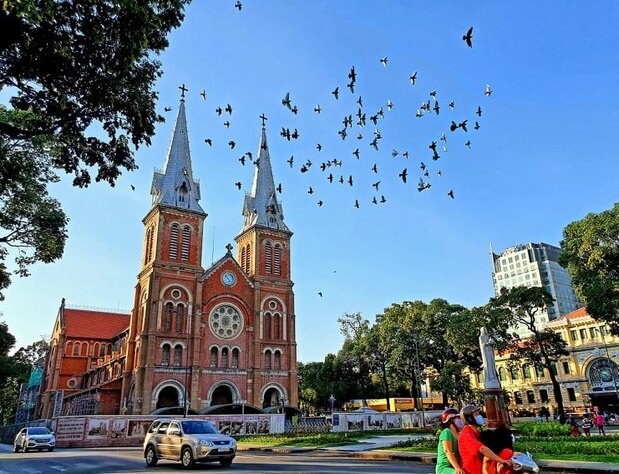
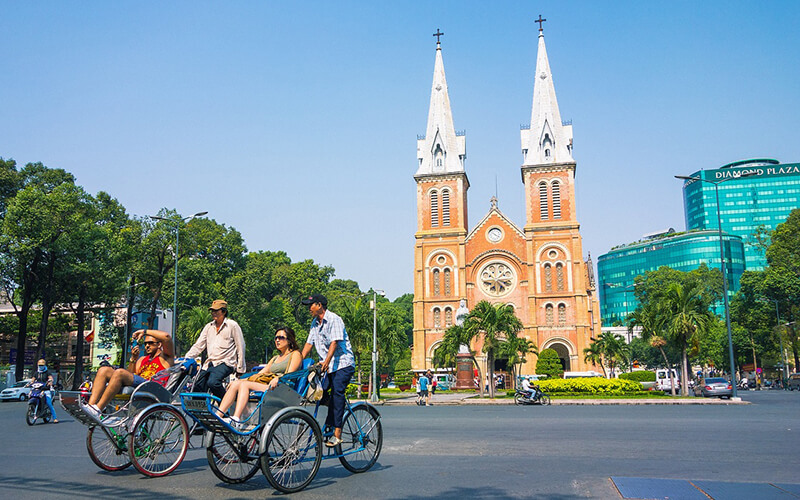
HOI AN – HUE
Traveling to Hoi An ancient town is an interesting and memorable experience for many domestic and foreign friends. Hoi An Ancient Town is a famous tourist destination about 30km southwest of Da Nang city center. No noise or bustle, Hoi An has a peaceful and ancient beauty. The appeal of the more than 400-year-old city comes from its ancient architecture, moss-roofed houses, and colorful lantern streets…
In addition, Hoi An is also famous for its unique traditional festivals such as village tutelary festivals, commemorations of industry masters, celebrations of religious saints,… and games. folk songs such as drill chants, rice pounding chants, hut songs,…
Not only can you immerse yourself in the simple beauty of the old town, traveling to Hoi An ancient town you can also discover the interference between Eastern cultures from Japan, China and Vietnamese culture. Because Hoi An was originally the busiest and busiest trading port that existed under the Nguyen Dynasty about 200 years ago, it was the trade between Vietnam and other countries (Japan, China,…) that created a Multicultural and colorful Hoi An exists to this day…
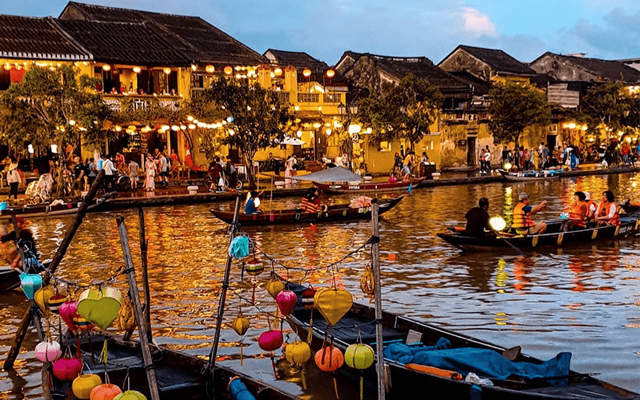
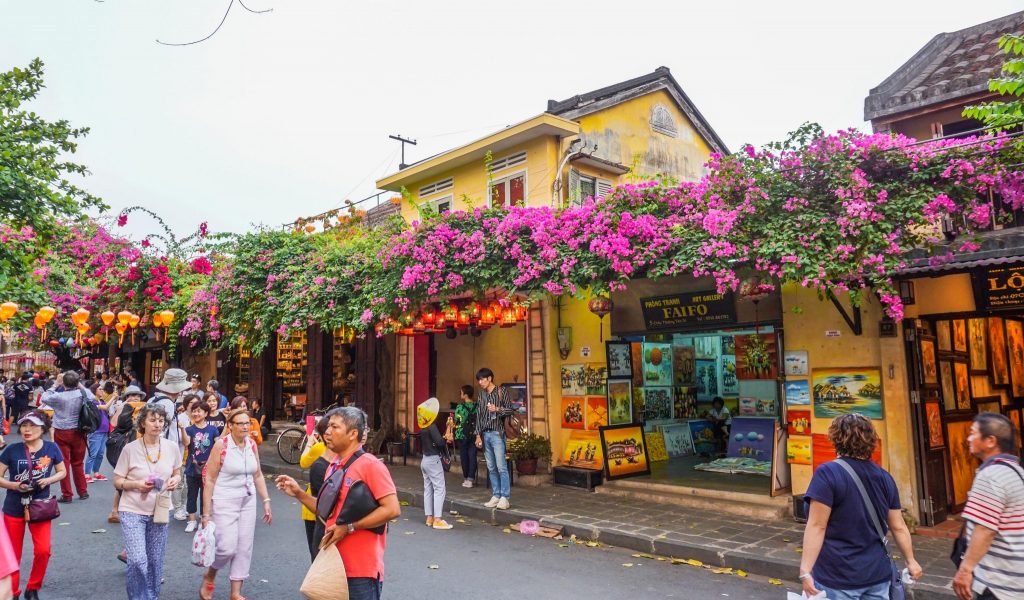
NINH BINH
Ninh Binh is located at the southern tip of the Northern Delta, about 90 km south of Hanoi capital, and is the boundary of three geographical regions: Northwest, Red River Delta and North Central. The North borders Ha Nam province; The East borders Nam Dinh province; The Southeast borders the East Sea; The West and Southwest border Hoa Binh and Thanh Hoa provinces. Natural area is about 1,386km2, population is about 952,000 people. Ninh Binh is known as a place with rich tourism resources with many historical and cultural relics, famous landscapes and a very valuable natural ecological environment.
Although it is not a large province, Ninh Binh has a very diverse terrain: mountains, plains, and coastal areas with all the nuances of a miniature Vietnam. With 3/4 of the area being hills and mountains, diverse karst terrain, and rich flora and fauna, many tourist areas have formed with beautiful natural landscapes, attractive to tourists, famous as: Tam Coc – Bich Cave, Cuc Phuong National Park, Van Long Wetland Nature Reserve, Yen Thang Lake Ecotourism Area, Dong Thai Lake, Thung Nham Bird Garden, Thung Nang, Thien Ha Cave, Kim Son coastal area, hot mineral springs… Especially Trang An Scenic Landscape Complex was recognized by UNESCO as a World Cultural and Natural Heritage in 2014, the first mixed heritage of Vietnam and Southeast Asia.
Not only famous for its beautiful landscapes, Ninh Binh is a land rich in historical and cultural traditions with 1,821 ranked historical relics. This is a sacred land, once the capital of Vietnam’s first centralized feudal state that existed for 42 years (from 968-1010) associated with three dynasties: Dinh, pre-Le and early Le. Ly Dynasty. Currently, Ninh Binh possesses very valuable cultural and historical heritages, which are priceless assets, typically: Hoa Lu ancient capital, Phat Diem Stone Cathedral, Bich Dong pagoda, Bai Dinh pagoda, and temples. Saint Nguyen, Thai Vi temple…
Besides historical and cultural relics, Ninh Binh also has many famous intangible values, such as poetry, festivals, Cheo melodies, Van singing, Xam singing and culinary culture. .. Ninh Binh has up to 260 festivals, many unique festivals are known to domestic and international tourists such as: Hoa Lu festival (recognized by the Ministry of Culture, Sports and Tourism as a national intangible cultural heritage), Bai Dinh pagoda festival, Trang An festival, Thai Vi Temple festival… This place is also the ancestral land of the arts of Xam singing, Cheo singing and of many traditional craft villages such as: Ninh Van stone carving, Bo Bat ceramics, Van Lam embroidery, Kim Son sedge mat craft… Long-standing traditional cultural customs and practices have created a unique and especially attractive feature in Ninh Binh culinary culture with Many famous dishes such as: Goat Meat, Scorched Rice, Kim Son Wine, Yen Mac Nem, Gia Vien Shrimp Paste,Bun Moc Kim Son…
The beautiful landscapes, long-standing historical and cultural relics and delicious dishes of this sacred land will certainly leave many unforgettable impressions in the hearts of visitors.
